Related Research Articles

The Metropolitan Opera is an American opera company based in New York City, currently resident at the Metropolitan Opera House at Lincoln Center, situated on the Upper West Side of Manhattan. The company is operated by the non-profit Metropolitan Opera Association, with Peter Gelb as the general manager. The company's music director has been Yannick Nézet-Séguin since 2018.

Henry Eugene Abbey was an American theatre manager and producer.

Agnes Booth, born Marian Agnes Land Rookes, was an Australian-born American actress and in-law of Junius Brutus Booth, Edwin Booth, and – arguably the most notable – John Wilkes Booth, the assassin of Abraham Lincoln.

Heinrich Conried was an Austrian and naturalized American theatrical manager and director. Beginning his career as an actor in Vienna, he took his first post as theater director at the Stadttheater Bremen in 1876. In 1878 he relocated to New York City where he remained for the rest of his career, serving initially as director of the Germania Theatre (1878-1881), followed by posts at the Thalia Theatre (1881-1882), New York Concert Company (1882-1883), and the Irving Place Theatre (1883-1903) In 1903 he became director of the Metropolitan Opera in New York City, a post he remained in until his retirement in 1908.
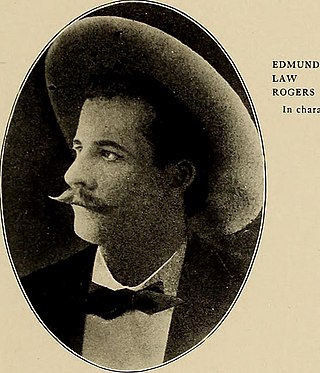
Edmund Law Rogers, also known by the stage name Leslie Edmunds, was an American stage actor. He was also a founding father of the Kappa Sigma fraternity at the University of Virginia.
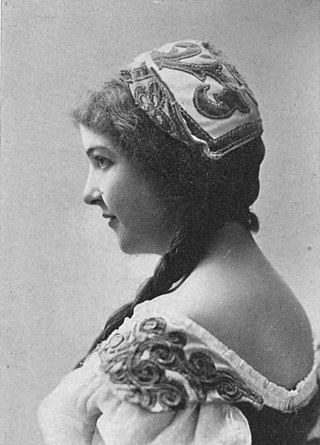
Alice Nielsen was an American Broadway performer and operatic soprano who had her own opera company and starred in several Victor Herbert operettas.

Solís Theatre is Uruguay's most important and renowned theater. It opened in 1856. The building was designed by the Italian architect Carlo Zucchi. It is located in Montevideo's Old Town, right next to the Plaza Independencia. The theatre was named after the explorer Juan Díaz de Solís, who was the first European explorer to land in modern day Uruguay.

Three New York City playhouses named Wallack's Theatre played an important part in the history of American theater as the successive homes of the stock company managed by actors James W. Wallack and his son, Lester Wallack. During its 35-year lifetime, from 1852 to 1887, that company developed and held a reputation as the best theater company in the country.
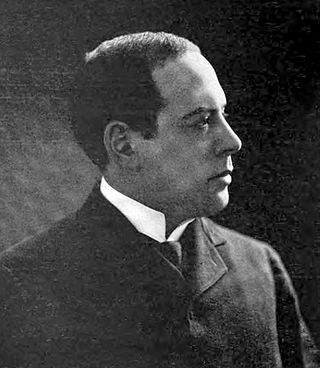
Charles William Strine was an American theatrical and opera manager best known for arranging the national tours and residencies of the Metropolitan Opera Company under the direction of Maurice Grau and Heinrich Conried.

Celestina Boninsegna was an Italian operatic dramatic soprano, known for her interpretations of the heroines in Verdi's operas. Although particularly eminent in Verdi's works, she sang a wide repertoire during her 25-year career, including Rosaura in the world premiere of Mascagni's Le maschere. Boninsegna made many recordings between 1904 and 1918, and her voice was one of the most successfully captured on disc during that period.

Alessandro Polonini was an Italian bass-baritone. He created the roles of Benoît and Alcindoro in Puccini's opera La bohème, as well as Geronte de Ravoir in his Manon Lescaut. Polonini also created the role of the surgeon in Verdi's La forza del destino.

Eugenia Mantelli was an Italian opera singer who had a prolific career in Europe, the United States, and South America from the 1880s through the early part of the twentieth century. She possessed a flexible warm voice with a wide vocal range that, while focusing mostly within the mezzo-soprano repertoire, enabled her to sing roles normally associated with contraltos and sopranos. Indeed, during her lifetime she was often identified as either a mezzo-soprano or a contralto by music critics without much consistency. While she had an excellent vocal technique and an exceptionally beautiful tone quality, her gifts as an actress and interpreter were only mediocre.
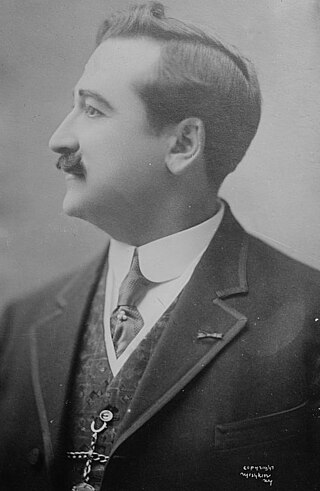
Florencio Constantino was a Spanish operatic tenor who had an active international performance career from 1892 through 1917. He was particularly admired for his performances in the operas of Giuseppe Verdi and Vincenzo Bellini; with the roles of the Duke of Mantua in Rigoletto and Arturo in I puritani being signature roles for the tenor.

Yolanda Mero was a Hungarian-American pianist, opera and theatre impresario, and philanthropist who supported destitute musicians.

The Park Theatre (est.1879) was a playhouse in Boston, Massachusetts, in the late 19th and early 20th centuries. It later became the State cinema. Located on Washington Street, near Boylston Street, the building existed until 1990.

The Tremont Theatre was a playhouse in Boston, Massachusetts, in the late 19th and early 20th centuries. Henry E. Abbey and John B. Schoeffel established the enterprise and oversaw construction of its building at no.176 Tremont Street in the Boston Theater District area. Managers included Abbey, Schoeffel and Grau, Klaw & Erlanger, Thos. B. Lothan and Albert M. Sheehan.
Auguste Charles Léonard François Vianesi was an opera conductor, born in the Austrian Empire and later naturalised French. His repertoire consisted mostly of French and Italian opera, in which he directed some of the world's great singers including Pauline Viardot, Christina Nilsson, Marcella Sembrich, the brothers Edouard and Jean de Reszke, and Feodor Chaliapin in the opera houses of London, Paris, Melbourne, St. Petersburg, Boston and New York. He retired around the time when sound recording became commercially available, and he seems not to have left any recorded legacy.
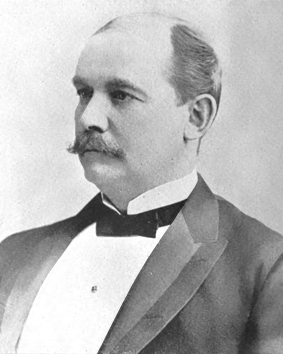
John Baptist Schoeffel, was an American theatre manager and producer, and hotel owner. With Henry E. Abbey he was involved presenting European theatrical stars in the US, including Sarah Bernhardt, Henry Irving and Ellen Terry: and with Maurice Grau he and Abbey managed opera singers as Adelina Patti, Christina Nilsson, Ernestine Schumann-Heink, Francesco Tamagno and Fyodor Chaliapin in their tours of opera houses in Boston, Chicago and New York.
Abbey's Park Theatre or Abbey's New Park Theatre was a playhouse at 932 Broadway and 22nd Street in what is now the Flatiron District of Manhattan in New York City. It opened as the New Park Theatre in 1874, and was in use until 1882 when it burned down and was never rebuilt as a theatre.

Rudolph Aronson was an American impresario and composer who was most notable for founding the Casino Theatre in New York City.
References
- Notes
- ↑ "Academy Theater, 245 Main Street, Buffalo, NY 14203". Cinema Treasures. Retrieved 18 May 2017.
- ↑ "Metropolitan Theatre / Academy of Music". History of Buffalo. Retrieved 18 May 2017.
- 1 2 3 4 5 6 7 "Death of Henry E. Abbey" (PDF). The New York Times. 18 October 1896. p. 25x. Retrieved 18 April 2017. NB Much detail about the Abbey, Schoeffel and Grau partnerships.
- ↑ Winsor 1881, p. 378.
- ↑ Brazilian violinist & conductor, see Gravenstein, Andre at MusicSack. Retrieved 22 May 2017.
- ↑ Salgado 2003, p. 125-6.
- 1 2 "Impresario Grau Is Dead". The Sun. New York City. 15 March 1907. p. 9a.
- ↑ Herx, Stephen (1999). "Marcella Sembrich and Three Great Events at the Metropolitan". Opera Quarterly. 15 (1): 49–71. doi:10.1093/oq/15.1.49. (subscription required)
- ↑ Leavitt 1912, p. 420.
- ↑ Brown 1903, p. 254.
- 1 2 "John B. Schoeffel dies in Boston at 72" (PDF). New York Times. 31 August 1918. Retrieved 12 May 2017.
- ↑ Salgado 2003, p. 126?.
- Sources
- Brown, Thomas Allston (1903). A History of the New York Stage, Vol. 3. New York: Dodd, Mead and Company.
- Leavitt, M. B. (1912). Fifty Years in Theatrical Management. New York: Broadway Publishing Co.
- Salgado, Susana (2003). The Teatro Solís: 150 Years of Opera, Concert and Ballet in Montevideo. Wesleyan University Press. ISBN 9780819565945.
- Winsor, Justin (1881). The Memorial History of Boston, vol. 4. Boston: Ticknor and Company. OCLC 1838124.


